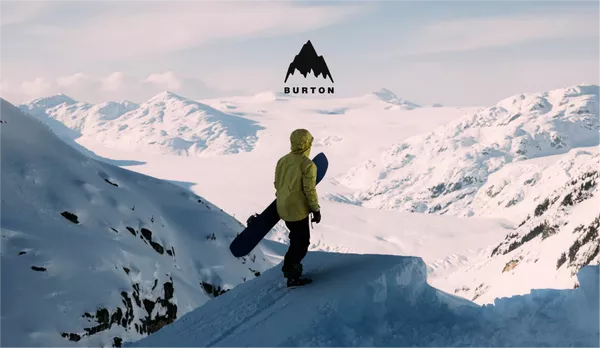All-mountain snowboards are versatile. They perform well in various conditions, from groomed runs to powder. For riders with larger feet, a wide snowboard is essential. It prevents toe and heel drag, enhancing stability and control. In this guide, we will delve into the features, benefits, and top models of all-mountain wide snowboards.
Why Choose an All-Mountain Wide Snowboard?
Versatility
All-mountain snowboards are designed for different terrains. Whether you ride on groomed slopes, powder, or park, these boards can handle it all. A wide snowboard accommodates larger feet while maintaining versatility.
Enhanced Stability
Wide snowboards provide stability, especially at higher speeds. They distribute weight evenly, reducing the chance of catching an edge. This feature is crucial for beginners and experienced riders alike.
Reduced Toe and Heel Drag
Larger riders often experience toe or heel drag on standard boards. A wide snowboard eliminates this issue, allowing for smoother turns and improved control.
SEE ALSO: Top 5 Gym Climbing Ropes on the Market
Key Features to Consider
Width
The width of a snowboard is vital for performance. Riders with size 11 feet or larger should consider a wide board. Check the manufacturer’s size chart to find the best fit.
Flex
Flex refers to how easily a snowboard bends. A softer flex is ideal for beginners, while a stiffer flex suits advanced riders. Most all-mountain boards offer a medium flex, striking a balance between maneuverability and stability.
Shape
Snowboards come in various shapes: directional, twin, and directional twin. Directional boards are better for downhill performance, while twin boards excel in freestyle riding. For all-mountain, a directional twin shape is often recommended.
Camber Profile
The camber profile affects how the board interacts with the snow. Common profiles include:
Traditional Camber: Offers great pop and edge control.
Rocker: Provides float in powder and easy turn initiation.
Flat: Balances stability and versatility.
Length
Length influences performance. Taller boards are faster and more stable, while shorter boards are more agile. Riders should choose a length that corresponds to their weight and riding style.
Top All-Mountain Wide Snowboards
1. Burton Custom Wide
Overview
The Burton Custom Wide is a legendary all-mountain snowboard. It features a twin shape and medium flex, making it suitable for various conditions.
Features
- Camber Profile: Traditional camber for pop and precision.
- Flex: Medium flex (6/10), ideal for versatile riding.
- Base: Sintered base for speed and durability.
Pros
- Excellent edge hold on groomed runs.
- Great for both park and powder.
Cons
- Pricey compared to other models.
2. Ride Warpig Wide
Overview
The Ride Warpig is a unique board with a wide, short design. It’s perfect for riders who want agility without sacrificing stability.
Features
- Camber Profile: Hybrid rocker for versatility.
- Flex: Medium flex (5/10) for balanced performance.
- Shape: Directional twin shape for versatility.
Pros
- Exceptional in powder and groomed conditions.
- Easy to turn and maneuver.
Cons
- Slightly heavier than some competitors.
3. GNU Riders Choice Wide
Overview
The GNU Riders Choice Wide is designed for all-mountain performance. It caters to various riding styles, from aggressive to playful.
Features
- Camber Profile: C2 hybrid camber for float and control.
- Flex: Medium flex (6/10) for adaptability.
- Base: Eco-sublimated base for speed and sustainability.
Pros
- Versatile in all conditions.
- Great for freestyle riding.
Cons
- Can be less stable at high speeds.
4. K2 Raygun Wide
Overview
The K2 Raygun Wide is an affordable all-mountain snowboard. It’s perfect for beginners and intermediate riders.
Features
- Camber Profile: Combination of rocker and camber.
- Flex: Soft to medium flex (4/10) for easy turning.
- Shape: Directional shape for stability.
Pros
- Great value for the price.
- Easy to ride and control.
Cons
- Less responsive at high speeds.
5. Salomon Assassin Wide
Overview
The Salomon Assassin Wide is a high-performance all-mountain snowboard. It excels in both powder and park.
Features
- Camber Profile: Rocker between the feet with camber at the tips.
- Flex: Medium flex (5/10) for versatility.
- Base: Sintered base for speed.
Pros
- Great for park and powder riding.
- Excellent edge grip.
Cons
- Can be too stiff for beginners.
How to Choose the Right Wide Snowboard
Consider Your Riding Style
Identify how you plan to use your snowboard. If you mostly ride powder, look for boards with a rocker profile. For park riding, consider a twin shape.
Check the Size Chart
Each manufacturer has its size chart. Ensure you select a board that matches your weight and foot size. A board that’s too short or too narrow can hinder performance.
Test Ride if Possible
If you can, test ride a few boards before purchasing. This experience helps you determine what feels best for your riding style.
Seek Expert Advice
Visit a local snowboard shop and consult experts. They can provide insights and recommendations based on your experience and preferences.
Maintenance Tips for Your Snowboard
Regular Waxing
Wax your snowboard regularly to maintain speed and performance. Most riders should wax every 5-10 days of riding.
Edge Sharpening
Keep your edges sharp for better grip. Sharpening can be done at home with a file or by a professional.
Clean After Use
Rinse your board with water after riding to remove snow and dirt. This helps prevent rust and damage.
Store Properly
Store your snowboard in a cool, dry place. Avoid leaving it in extreme temperatures or wet conditions.
Conclusion
Choosing the best all-mountain wide snowboard involves understanding your needs and preferences. Each board offers unique features that cater to different riding styles. The models mentioned above provide excellent performance and versatility for various conditions. Remember to consider your riding style, size, and experience when making your choice. Happy riding!
Related topics:
- Where is the Rocky Statue Located Now?
- The 9 Best Extreme Sports
- Best Tech Bindings: A Comprehensive Guide


